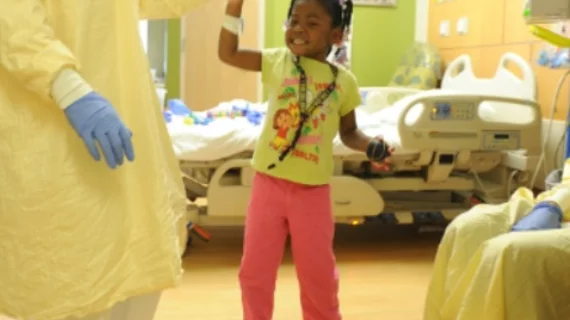New publicly available deep learning model for CT organ segmentation in children shows promise
A new deep learning model catered to pediatric CT abdominal organ segmentation has just been made publicly available to further research and could potentially see clinical deployment in the near future.
The model was developed and validated specifically for liver, spleen and pancreas segmentation, and outperformed a publicly available segmentation model already in use—TotalSegmentator. The model could help improve on the lack of proper segmentation algorithms suited for children, the authors of the new study suggested.
“Deep learning abdominal organ segmentation algorithms have shown excellent results in adults,” first author Elanchezhian Somasundaram, PhD, from the radiology department at Cincinnati Children’s Hospital Medical Center, and colleagues noted, adding that “validation in children is sparse.”
Manual segmentation is time-consuming, but deep learning models have shown promise in speeding the process without sacrificing accuracy. However, there is limited data on how these models can be applied in pediatric settings.
“Children differ from adults both in abdominal organ size and in the quantity of intraabdominal fat separating organs,” the authors explained. “The effectiveness of automatic deep learning models in segmenting the pediatric pancreas is of particular concern given this organ’s small size and variable morphology.”
For this study, models were trained using 1,731 CT examinations (1504 training, 221 testing) from three international pediatric datasets and three public datasets that include both children and adults with different pathologies. Three deep learning architectures (SegResNet, DynUNet, and SwinUNETR) from the Medical Open Network for AI (MONAI) were trained using native training with only institutional datasets, and transfer learning, which utilized pre-training on public datasets. The models’ performances were compared to that of TotalSegmentator’s (without additional training) on a set of test data.
On internal data, transfer learning models outperformed both the native training models and TotalSegmentator in segmentation of normal abdominal organs. Transfer learning models maintained their performance when faced with public pediatric data and mainly adult public data. Different pathologies did not appear to deter performance either, but segmentation of the liver and spleen were superior to pancreas segmentations.
The best performing model—DynUNet with transfer learning training—has since been made available as an open-access MONAI bundle to further research and could potentially see clinical deployment. Compared to TotalSegmentator, this model shaved a significant amount of time off the segmentation process.
“This improved efficiency of the proposed model may facilitate clinical workflows in settings with limited computational resources. The ability to perform segmentation tasks in seconds can allow volumetry information to be available to radiologists at the time of interpretation,” the authors wrote, adding that this could also expedite diagnoses in some cases.
The study is published in the American Journal of Roentgenology behind a paywall.

